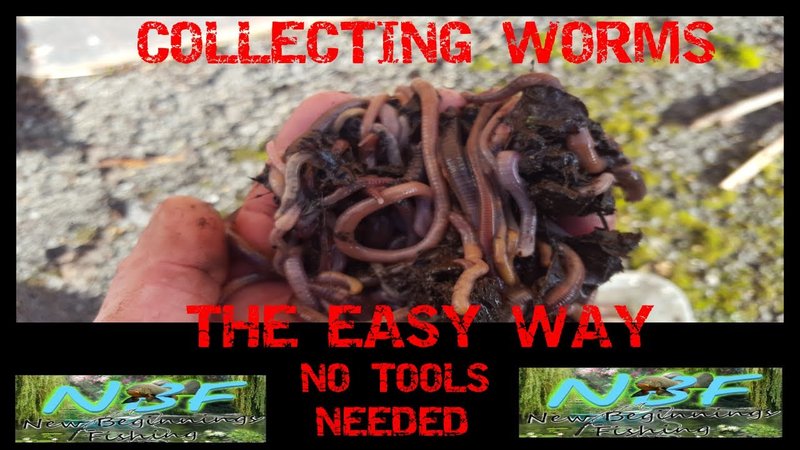
Honestly, collecting earthworms can be a fun, hands-on way to learn about soil health and biodiversity. It’s about embracing curiosity while respecting nature. So, let’s dig into the best practices for collecting earthworms without causing them harm. Grab a cup of coffee, and let’s explore!
Understanding Earthworms and Their Role
Before you start collecting earthworms, it’s helpful to know why they’re such important players in our ecosystem. Earthworms are often referred to as *nature’s tillers* because they aerate and mix the soil as they burrow through it. This helps with water drainage and nutrient distribution, which is crucial for plant growth.
When earthworms dig tunnels, they also break down organic material, like dead leaves and decaying plants, turning them into nutrient-rich compost. This process helps nourish the soil, making it more fertile over time. So, while it’s super cool to study earthworms up close, it’s equally essential to handle them with care to ensure they continue to thrive.
You might be wondering, what exactly do earthworms need to survive? Well, they require moist environments and organic matter to feed on. This means the best time to collect them is usually after a rainstorm when the soil is wet, and they’re more likely to be near the surface.
Tools You’ll Need
Collecting earthworms can be simple, but having the right tools makes it easier and more humane. Here’s a short list of what you’ll need:
- Garden trowel or spade: A small spade is perfect for gently digging in the soil.
- Container: Get a bucket or a breathable container to hold the worms.
- Moisture: Spray bottle with water, to keep them moist during collection.
- Gloves: Optional, but they can help you handle the worms more easily.
With these items, you’re ready to head out and start your collection adventure. It’s almost like gearing up for a treasure hunt, but instead of gold, you’re finding *nature’s gold* in the form of earthworms!
Where to Look for Earthworms
Finding earthworms is like searching for buried treasure. They love rich, moist environments, so certain spots are better than others. Here are some ideal places to check:
1. **Your Backyard:** If you have a garden, especially one that’s composted, you might find earthworms near the surface, especially after rain.
2. **Woodland Areas:** Soil underneath trees is often richer in organic material, making it a great spot to find earthworms. Look around decaying leaves or fallen logs.
3. **Garden Beds:** If you have garden beds with plenty of organic matter, check there too. Earthworms thrive in nutrient-rich soil.
When you find a good spot, start gently digging with your trowel or spade. Remember, the trick is to be gentle; you want to disturb the soil as little as possible. It’s all about being a friendly explorer!
How to Collect Earthworms Humanely
Here’s the thing: while it’s exciting to collect earthworms, it’s important to do it in a way that doesn’t harm them. Here’s how you can ensure a safe and humane collection process:
– **Avoid Direct Sunlight:** Earthworms are sensitive to light and can get stressed if exposed to it too long. Work in shady areas or during cloudy days whenever possible.
– **Dig Gently:** When you’re digging, do it carefully. You want to loosen the soil without crushing any worms. If you come across one, use your fingers or the trowel to carefully lift it out.
– **Keep Them Moist:** Earthworms breathe through their skin, so keeping them moist is crucial. If you’re gathering multiple worms, mist them lightly with water in your container to ensure they stay happy during your study.
By following these steps, you’ll not only make the collection process enjoyable, but you’ll also show respect for these little creatures and their vital role in nature.
Transporting Earthworms Safely
Once you’ve collected some earthworms, you’ll need to transport them back home safely. Here’s how to do it without causing them stress:
– **Use a breathable container:** A container with holes allows for airflow. Think of it as a little home for your worms during the trip.
– **Add some soil or leaf litter:** A bit of moist dirt or decayed leaves in the container helps keep them comfortable. It’s like packing a cozy blanket for a road trip.
– **Limit the time:** Try not to keep them in the container for too long. The sooner you can return them to a safe environment for study, the better.
Remember, earthworms are living beings, and their well-being should always come first. Keeping them comfortable during transport is critical.
Setting Up a Temporary Habitat for Study
Once you’re back home, you’ll want to create a suitable temporary habitat for your worms. This can be set up in a simple container or aquarium. Here’s how to do it:
1. **Choose a container:** A clear plastic container works well. Make sure it’s at least 12 inches deep, so the worms can burrow.
2. **Add soil:** Fill the bottom with about 4 inches of moist, organic soil. You can mix in some compost to provide nutrients.
3. **Moisture and ventilation:** Ensure your container has holes for ventilation. Keep the soil damp but not soggy. You can use a spray bottle to lightly mist it as needed.
4. **Feed your worms:** You can feed them vegetable scraps like banana peels or coffee grounds. Just be careful not to overfeed, as leftover food can attract pests.
This little habitat acts as a mini ecosystem for your earthworms, allowing you to study their behaviors and contributions to soil health without harming them.
Why It Matters to Study Earthworms
Now that you know how to collect earthworms humanely, you might ask why it’s essential to study them in the first place. Understanding earthworm behavior and contributions can give you insights into soil health, agriculture, and environmental sustainability.
– **Soil Health:** Earthworms play a significant role in creating nutrient-rich soil. By studying them, you can learn more about how to improve soil quality in your garden or farm.
– **Environmental Indicators:** Earthworm populations can signify the overall health of ecosystems. A thriving worm population often indicates good soil conditions.
– **Educational Value:** Collecting and studying earthworms can be a great educational experience for children and adults alike. It fosters a greater appreciation for nature and our responsibilities towards it.
So, every time you dig up a worm, remember that you’re not just observing a creature; you’re discovering vital pieces of our environmental puzzle.
In summary, collecting earthworms for study doesn’t have to be daunting. With a little knowledge, the right tools, and a whole lot of care, you can engage with these fascinating creatures without harming them. Whether you’re a student, gardener, or simply a nature lover, take the time to explore and appreciate the world beneath your feet. Happy worm hunting!

